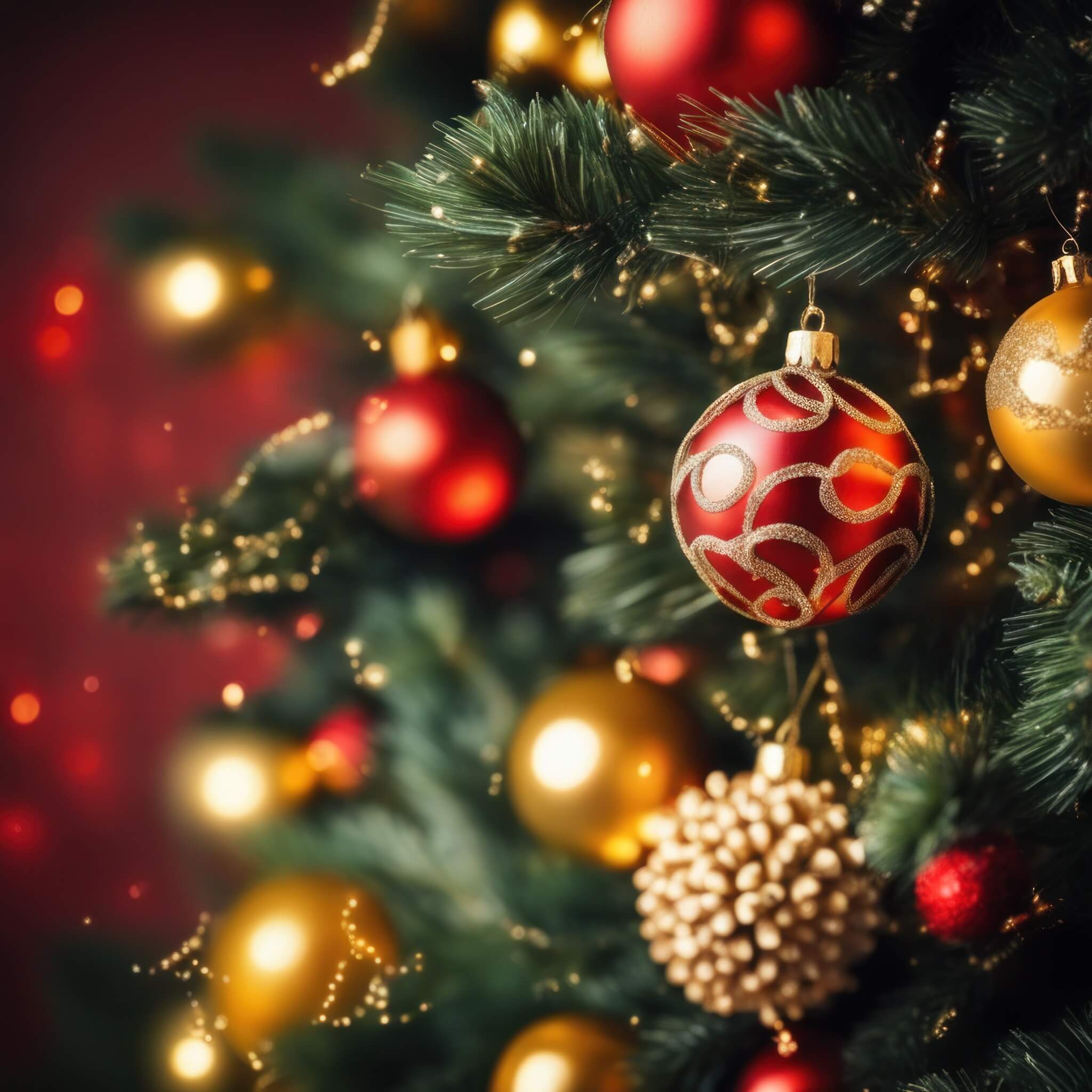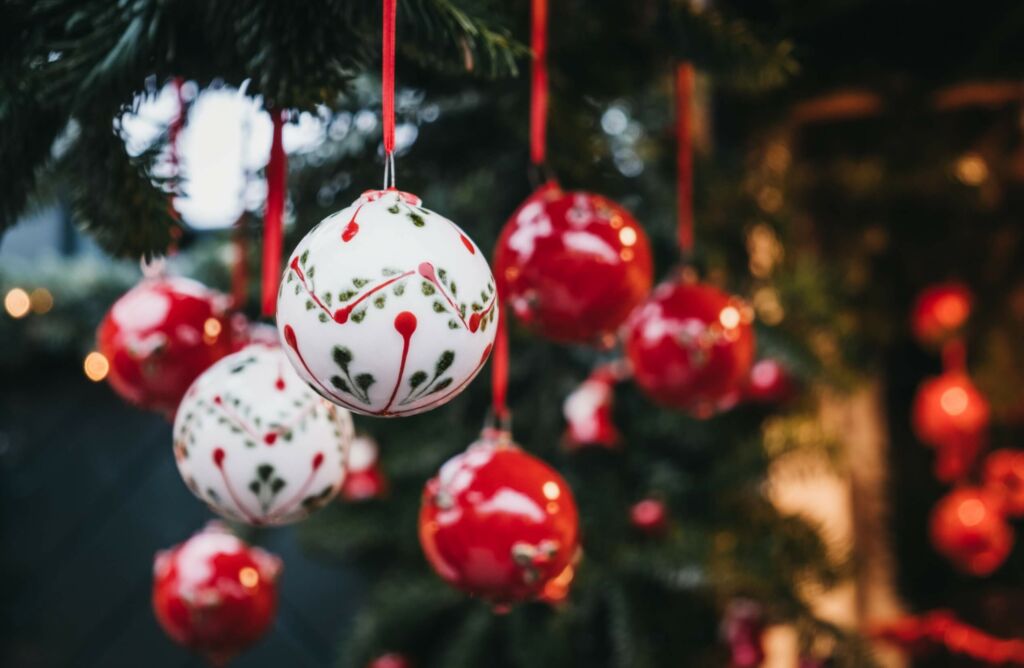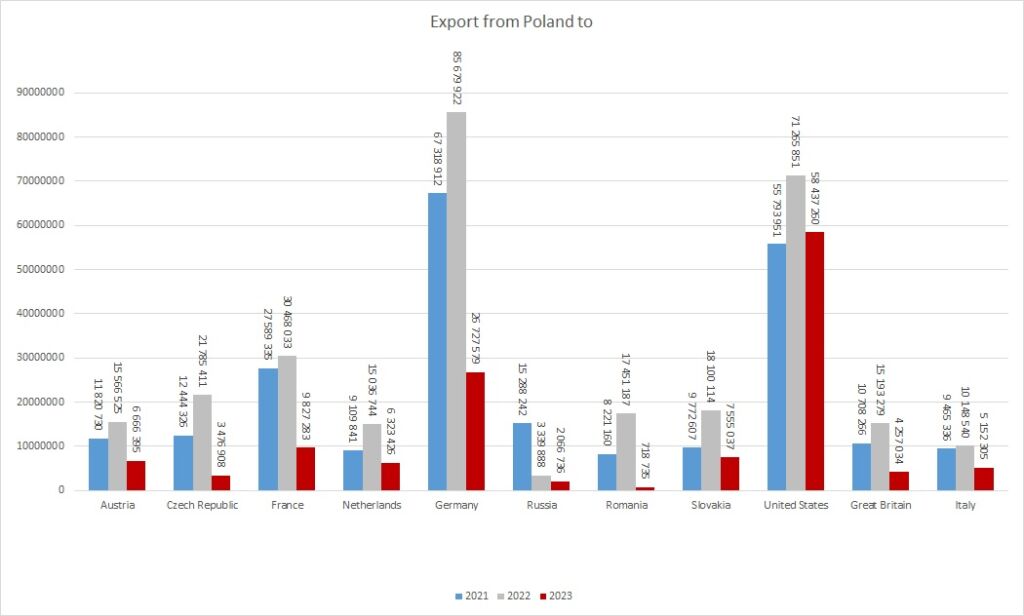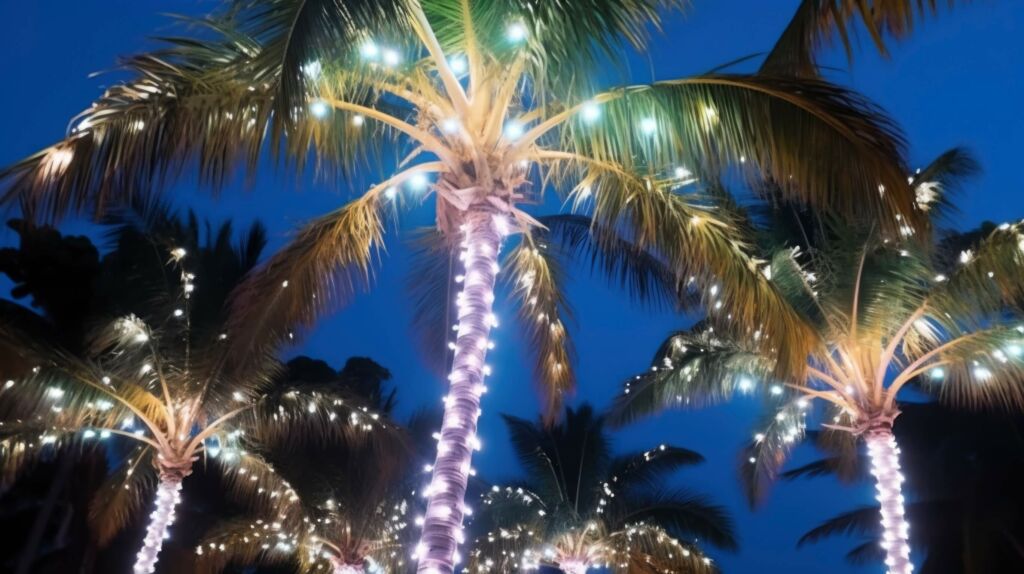Christmas Tree Decorations – Christmas Craftsmanship
20.12.2023
The Christmas tradition of making Christmas decorations in Poland is relatively long – the first glass baubles appeared in the 70s of the nineteenth century. The largest factory, which produced these ornaments, was located in the Lower Silesian town of Milicz, where presently the Museum of Christmas Baubles is located. The world-famous Polish glass Christmas tree decorations have not only an aesthetic value, pleasing to the eye during Christmas celebrations, but also a carrier of cultural heritage.

The first glass baubles were made in the city of Lauscha in Germany by Hans Greiner. Legend has it that he started making blown glass shells to decorate the Christmas tree, because he could not afford the typical decorations of that time, i.e. nuts, apples or sweets. And they have their own symbolism. As Katarzyna Smyk points out in her book ” The Christmas Tree in Polish Culture. The symbolism of the tree and ornaments”, the walnut symbolizes long life and health, the apple – health and the ability to make wise choices, the pine cone – fertility, and the mushroom – happiness. Interestingly, the Złotoryja bauble manufacturer exports thousands of its products to the U.S. in the shape of cucumbers every year. Americans believe in their miraculous powers. A cucumber hung on a Christmas tree is supposed to ensure material success, abundance and happiness.
Regions famous for the production of glass baubles
There are many regions in Poland that have made a name for themselves in the production of Christmas decorations. One of them is the Łowicz region, famous for its folk tradition and hand-made ornaments. Bolesławiec, known for its ceramics, also produces unique Christmas tree decorations. Krosno, on the other hand, is a city with a long history of glass production, which makes it an important centre for the production of glass baubles.
Competitive Advantages
Polish glass baubles are recognized on the international market due to several important competitive advantages:
- Tradition and handicraft
Poland has a long tradition of making Christmas decorations, which translates into high quality handicrafts. Handmade production and the use of traditional decorative techniques give the baubles a unique character that is appreciated by customers looking for authentic, traditional decorations.
- A wealth of materials and techniques
Polish baubles are made of a variety of materials, such as ceramics, glass, metal, wood, fabrics and plastic. The use of various techniques, such as painting, sequin decoration, glitter, embroidery or carving, allows for the creation of diverse and attractive patterns.
- A multitude of styles and designs
Poland offers a wealth of styles and designs of Christmas decorations. In different regions of the country, you can find unique folklore motifs, traditional folk patterns, as well as modern and elegant compositions. This assortment attracts customers with different tastes.
- Handmade quality and uniqueness
Many manufacturers in Poland still focus on manual production of baubles, which translates into their exceptional quality and uniqueness. Customers appreciate the craftsmanship and individuality that give the ornaments value and exclusivity.
- Sustainable production
In response to the growing interest in sustainability issues, Polish manufactures are increasingly turning their attention to sustainable production. The use of environmentally friendly materials and eco-friendly practices attract customers for whom this aspect is of great importance.
- Variety of products
Poland offers a wide range of Christmas decorations, including traditional Christmas motifs as well as modern and elegant designs. The variety of products allows us to satisfy the different preferences of our customers.
- Reputation on foreign markets
Poland is valued on foreign markets for the high quality of its products. Its reputation as a manufacturer of durable, beautiful and traditional Christmas decorations attracts customers from all over the world.

Export Markets
Polish baubles hang on the largest and most famous Christmas trees of the world, among them, in the Vatican and the White House. Celebrities such as Ricky Martin and Oprah Winfrey boasted about having them on their trees. Polish diplomats often use our native Christmas tree decorations to decorate our embassies and consulates during festive events and gatherings.
Export of Christmas decorations from Poland

It is not surprising that the export of Polish Christmas decorations is not decreasing. In 2021 and 2022, the largest recipients of these products were Germany (in 2021 – PLN 67.3 million, in 2022 – PLN 85.6 million) and the USA (in 2021 – PLN 55.8 million, in 2022 – PLN 71.2 million). Other significant markets, albeit with significantly lower sales value, were France, the Czech Republic, Slovakia and Romania.
Christmas decorations around the world
The choice of Christmas decorations is influenced by cultural traditions, personal preferences and current trends. They can vary even within a country due to regional differences and individual tastes.
In the U.S., baubles with personalized elements such as names or dates that are meaningful to the family, as well as motifs that refer to interests or hobbies, are popular. A traditional element is candy in the shape of a cane. Legend has it that the confectioner who was the first to make sweets in the shape of the letter “J” wanted to immortalize the Latin letter from which the name Jesus begins.
Italians like decorations created by using the technique of decoupage, as well as hand painted baubles, often inspired by Italian art, culture and landscape.
The Protestant Länder of Germany prefer subdued colours with delicate decorations. On the other hand, the mainstays of Catholicism – Bavaria, southern Germany, Austria – prefer saturated colours and richer decorations with religious accents.
Scandinavians, especially the Swedes, prefer animal figurines instead of traditional baubles. It is worth mentioning especially the Christmas billy goat, which has a special role in as many as three countries – Sweden, Norway and Finland.
The English and Irish, when decorating their trees, are guided by the principle that the more expressive, the better. There use a lot of lights and other luminous elements.
Mexicans, instead of a real Christmas tree, decorate artificial trees or put a few fragrant branches of a live tree in vases. On the streets, palm trees play the role of Christmas trees.

In China, small tangerine and orange trees are used as Christmas trees, and decorated with candied fruit, paper lanterns and flowers.
The production of Christmas decorations in Poland is not only an industrial process, but also cultural heritage passed down from generation to generation. Some Polish manufacturers have managed to survive the onslaught of Chinese decorations. Those who did persevered have noticed that the period of choosing plastic baubles from Asia has passed. There is a retreat from plastic and mass production. Today, aesthetics, ecology and handmade are once again more important.
- Everything
- News (1)
The Export Promotion Portal uses cookies to make it easier for users to use the website and for statistical purposes. If you do not block these files, you agree to their use and saving in the memory of your computer or other device. Remember that you can change your browser settings to block the storage of cookies. More information can be found in Privacy Policy and Terms and conditions.
